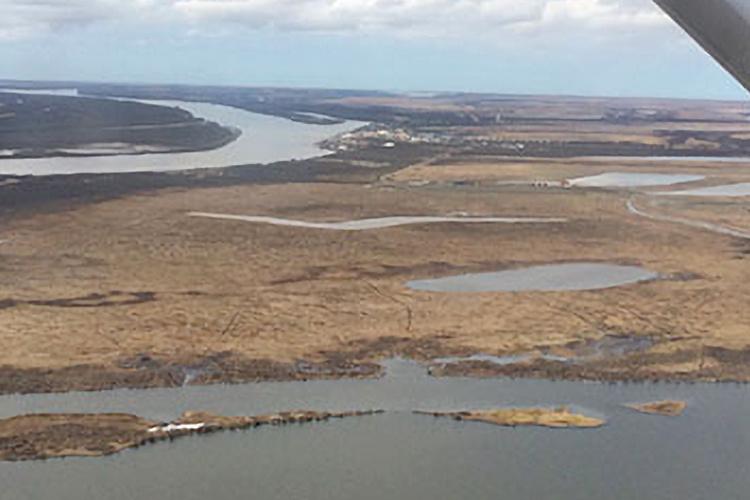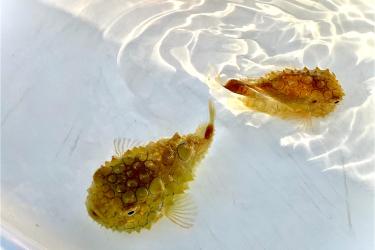The Yukon River branches into three main tributaries which the local people call the South Mouth, the Middle Mouth, and the North Mouth. Our research is based in the village of Emmonak which is located close to where the South Mouth empties into the sea.
Six days a week, fishermen from the Emmonak and the nearby village of Alakanuk take us by boat to three fishing locations, or sampling stations, on each of the tributaries. These stations were selected based on previous scientific research, knowledge of local fishermen, and a great deal of trial and error! Because the stations are 20 or more miles apart, one biologist traveling from Emmonak by small skiff can only sample a single tributary in a day.

Juvenile fish captured in a typical trawl.
The tributaries are very different from each other in size, amount of flow, and habitat. South Mouth is the largest tributary and is several miles across. Most of the river flow runs through this tributary. North Mouth is the smallest of the tributaries and in places it is less than a quarter mile wide. By collecting data from all three tributaries, scientists can see whether there are differences in what the fish are eating and how fast they are growing in the different Yukon River habitats.
At each sampling station, fish are captured using a net that is towed between two skiffs. This is a small net that is designed to capture small fish. Each tow lasts 15 minutes, and we do three tows at each station. At the end of the tow, researchers haul the net on board and begin identifying, counting, measuring all the fish that were caught catch.
Juvenile coho, chum, and pink salmon are frequently captured during the same period as out-migrating juvenile Chinook salmon. Juvenile coho salmon can be easily mistaken for Chinook salmon. Researchers are able to differentiate the two species by slight differences in their markings, fins and coloration.

Juvenile Arctic lamprey are abundant in catches at the beginning of the summer
For the past two years of this project, coho and Chinook numbers have been higher in early June and begin to drop off by the end of June. This past June- nearly 100 Chinook and coho were captured in one day!
This year, we also caught a lot of pink salmon, the smallest of the out-migrating salmonids. The pink salmon are easily identifiable by their size, sleek body shape, and complete silver coloration and there can be hundreds of them in a single tow!
Chum salmon are also abundant in the early season can be mistaken for pink salmon, as they are small and silvery, but they have black spots on their back and have faint marks on their side. As the summer progresses, pink and chum numbers drop off, and juvenile whitefish numbers increase. Juvenile whitefish are not always easy to identify when they are small. Commonly captured whitefish include sheefish, broad whitefish, least cisco, and humpback whitefish.
One of the oddest fish we catch so far this season is the juvenile Arctic lamprey, a jawless, long green fish that feeds by attaching itself to other organisms and sucking blood and fluid out of them.

The Arctic lamprey uses it sucker-like mouth to attach to other organisms from which it feeds.
This fish recently made news after several Arctic lamprey were found falling from the sky in Fairbanks, Alaska. It was later determined that the Arctic lamprey falling from the sky were a result of birds, but gave people a scare nonetheless! Some populations of Arctic lamprey are anadromous, spending part of their lives in the ocean, and many of the ones that we catch are heading out to sea.


